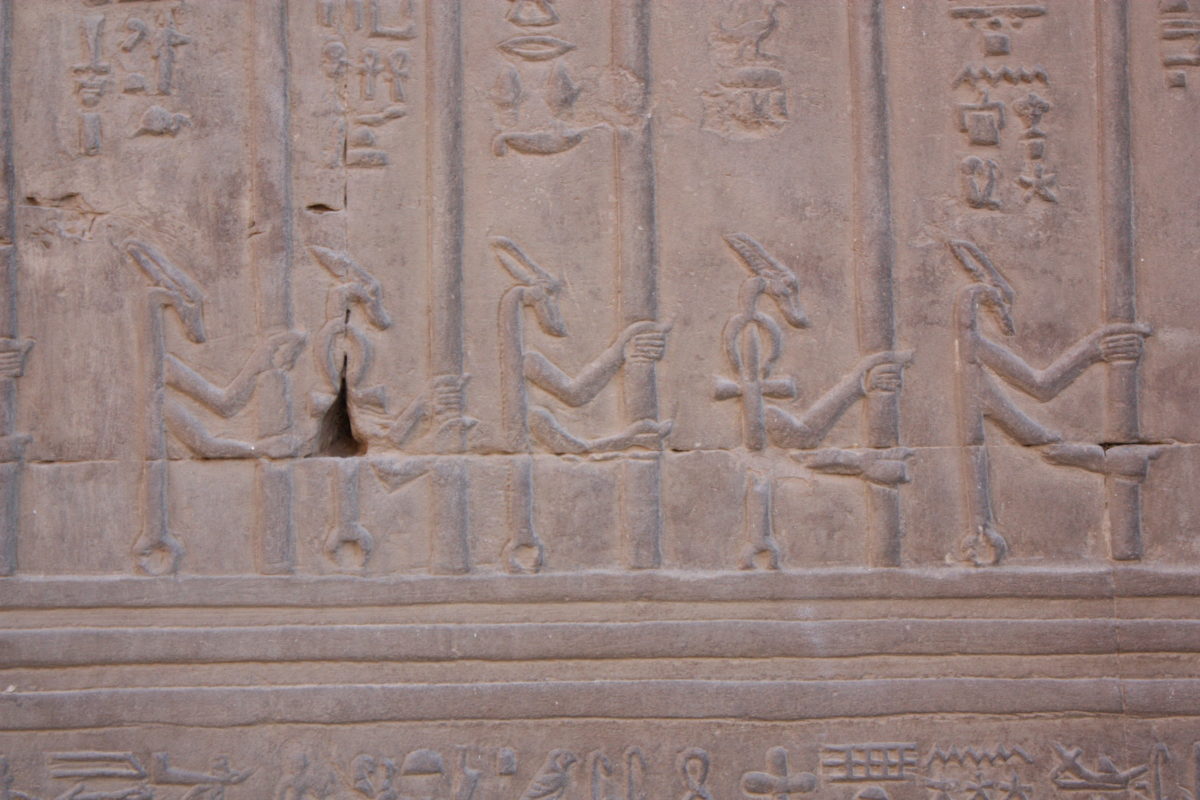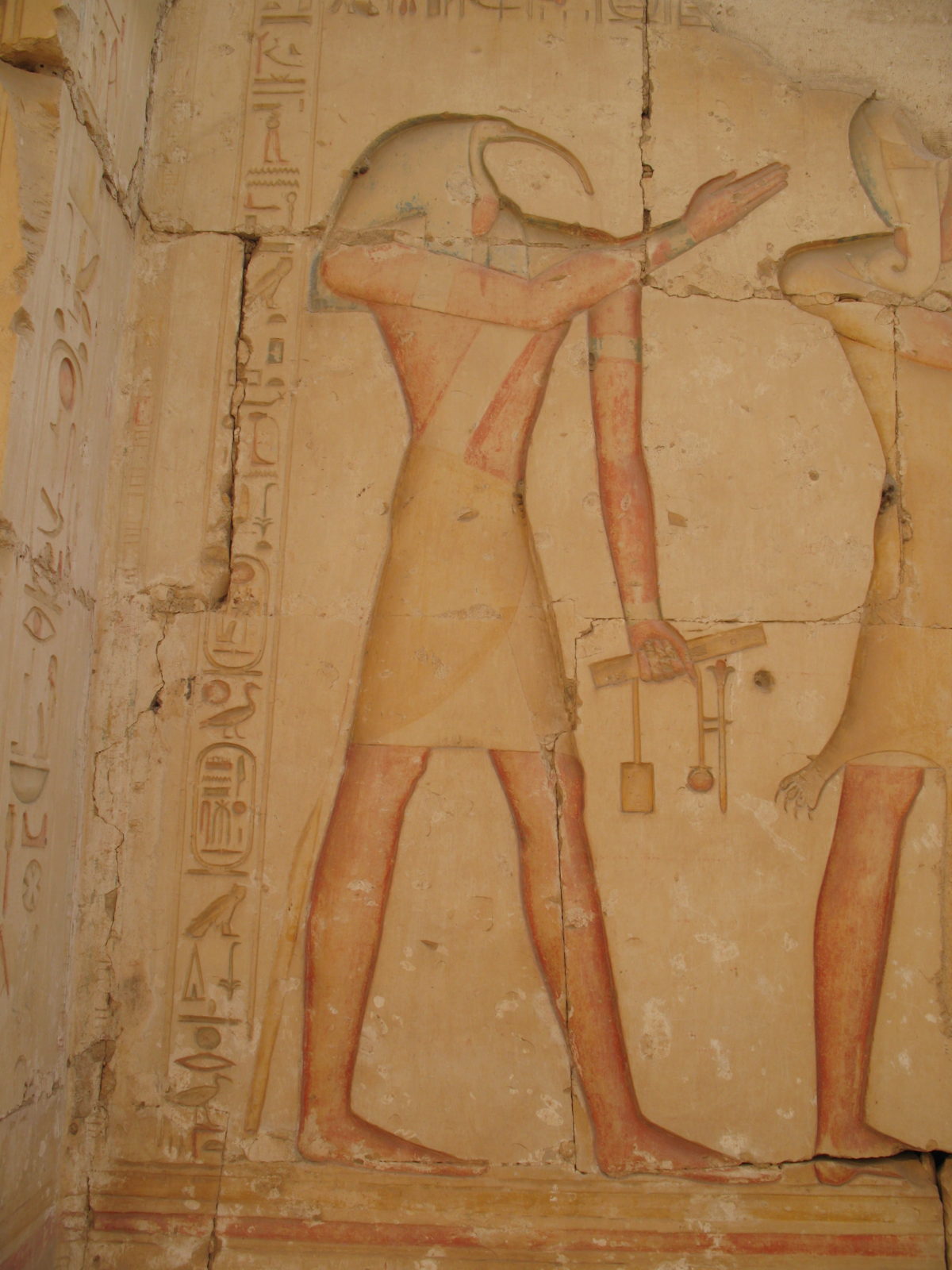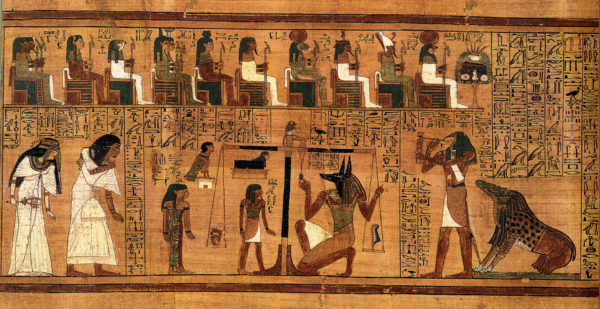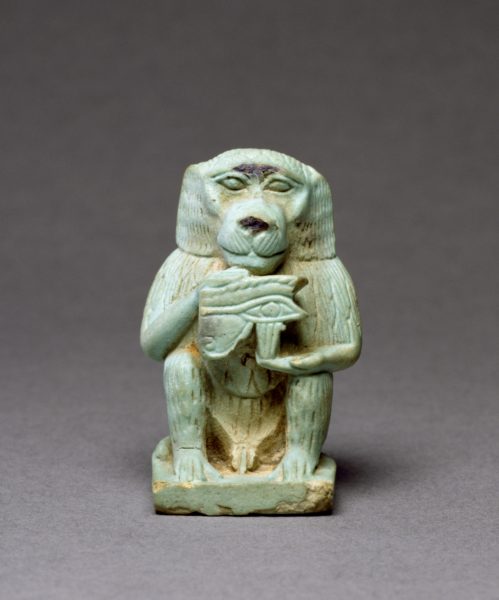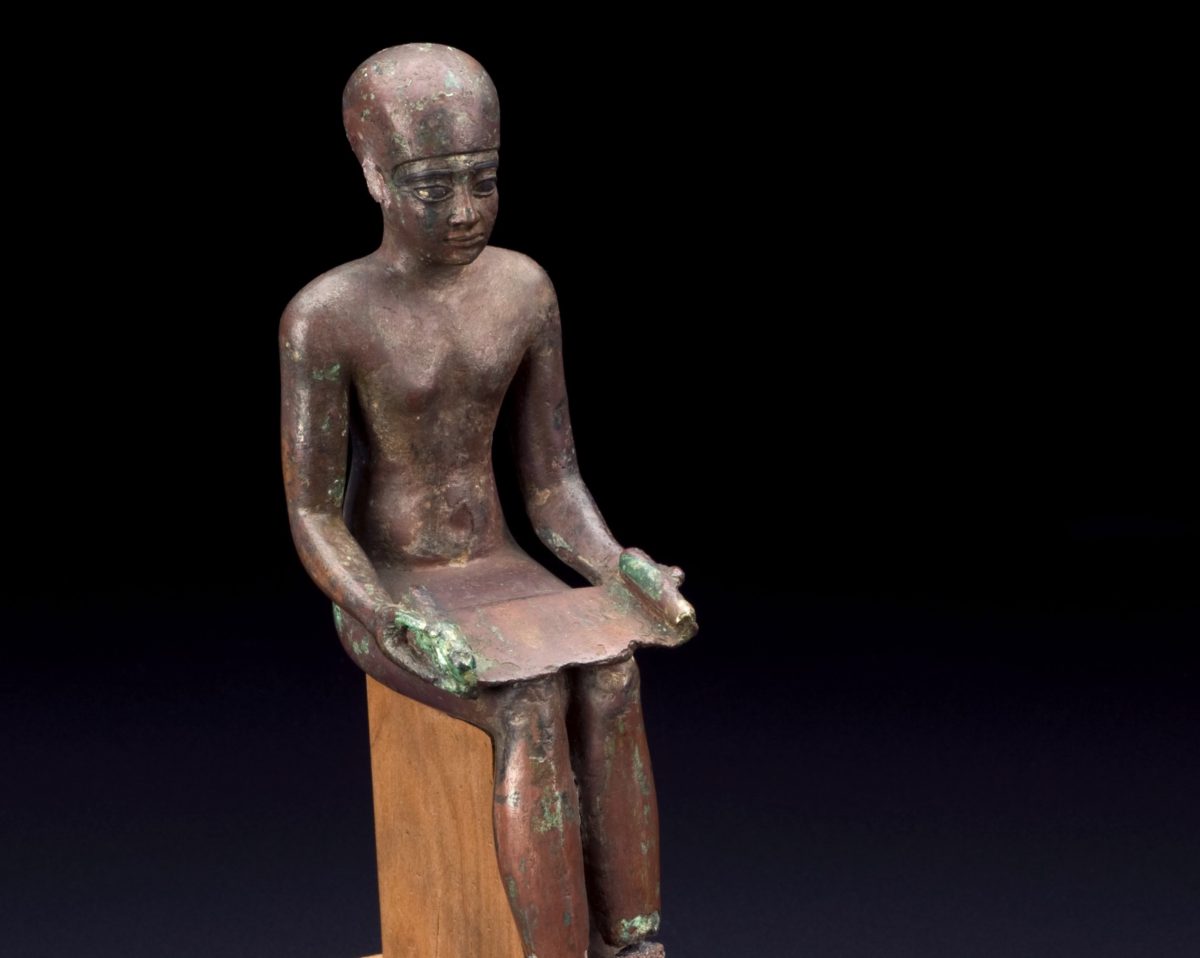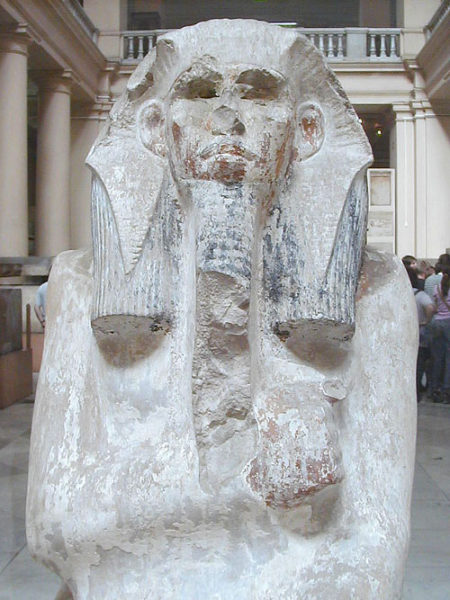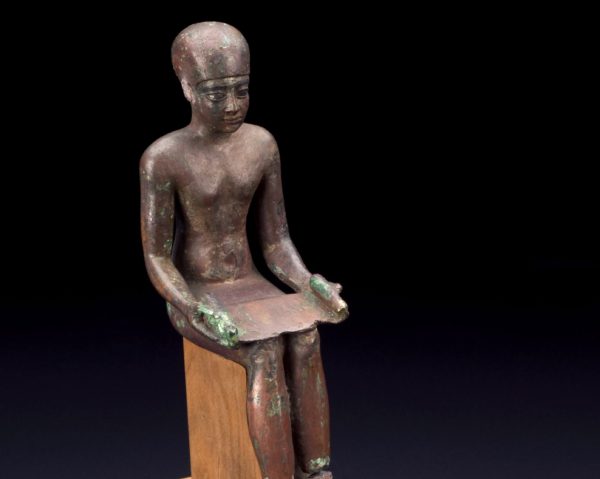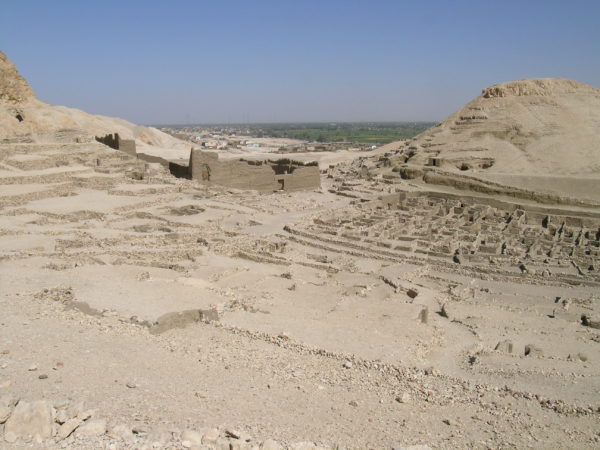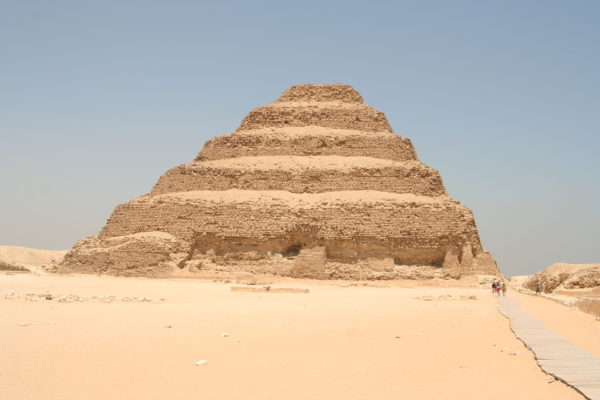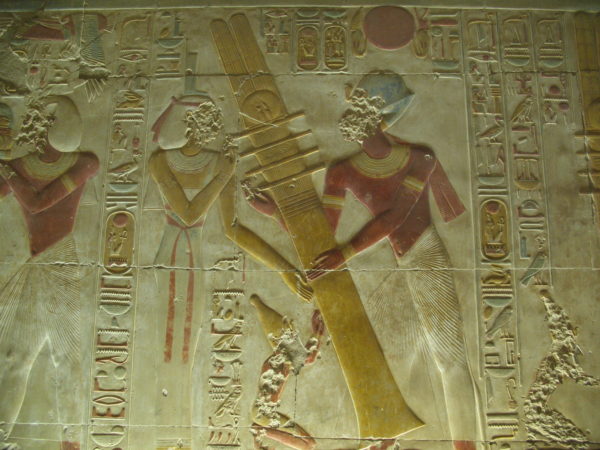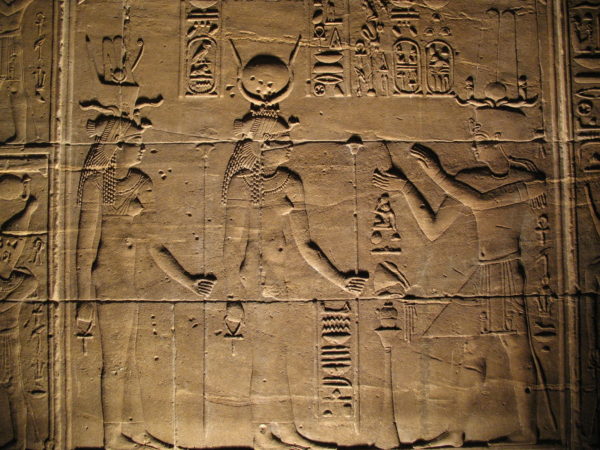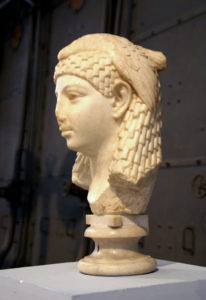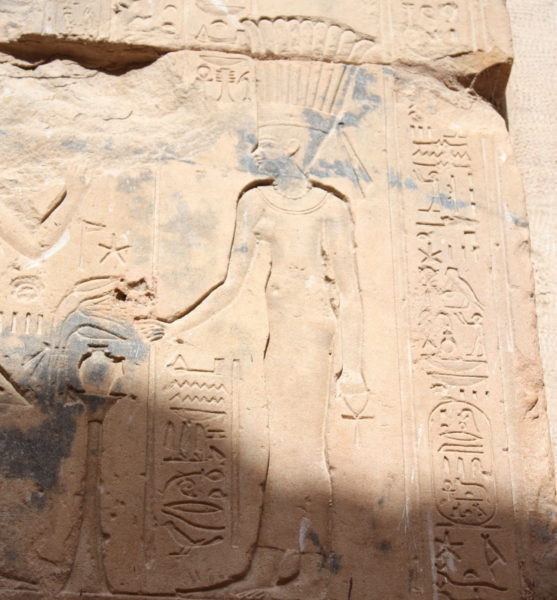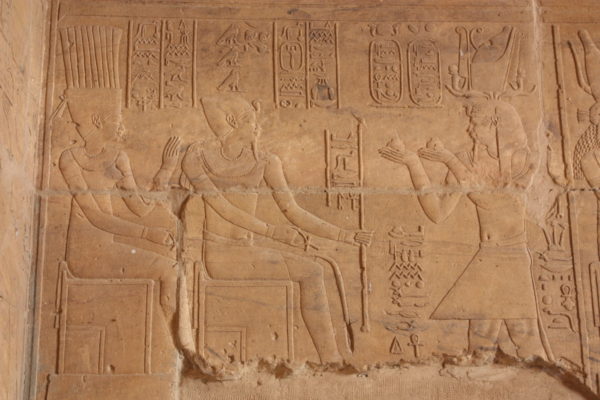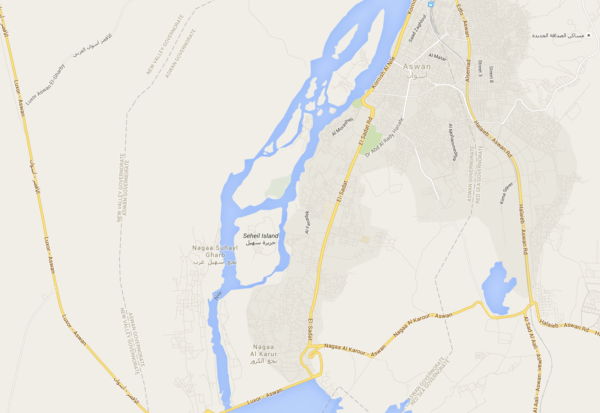The Was Sceptre
Many people will recognise the somewhat unusual Was sceptre, which has an animal head with a long snout and prominent ears. It is thought that the animal is a form of canine or canid, for example a fox and that originally the sceptre was a type of fetish- containing the spirit and power of the animal. The bottom of the sceptre, unlike other kemite staffs, is forked.
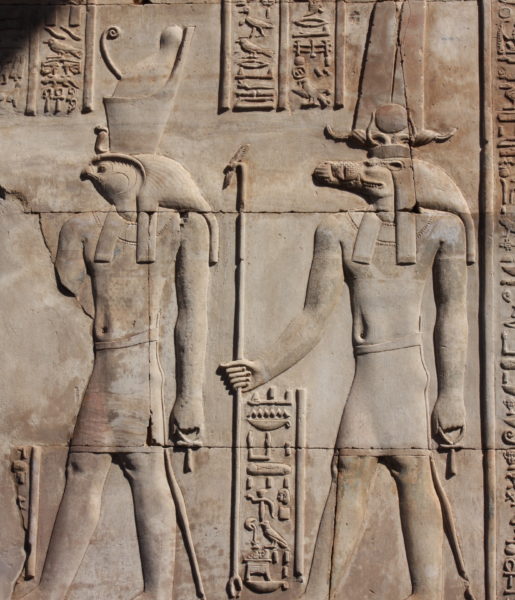
The Was staff became synonymous with power and was often the sceptre held by a variety of gods and the king. It was thus a sacred emblem.
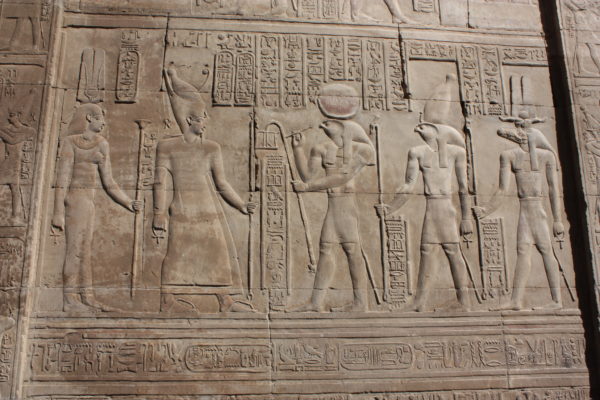
A giant Was sceptre

This remarkable object stands over 2 meters tall (over 7 feet) and weighs 65 kilos (143.3 pounds). It is made from glazed crushed quartz, from a mould. We now erroneously refer to this material as faience, because when it was seen for the first time scholars believed it was the same as an Islamic material, which is a glaze over pottery. The Kemite version is not, however, made of clay. I’ll write more about this in a future post.
The object was found by the Egyptologist Petrie in an inner chamber of a temple dedicated by Thutmose (I) Aakheperkare to the deity Seth in the Naqada region. Thutmose ruled from 1504 to 1492 BCE. However, the sceptre is inscribed with the names of a later king, also from the Dynasty 18: Amenhotep (II) Aakheperrure, who ruled from 1428-1397 BCE.
The object was in fragments when it was discovered and has been restored. It was originally made in sections from a mould which were then joined by the artist.
I first saw the object as part of an exhibition Gifts of the Nile. Ancient Egyptian Faience in mid-1990’s. Many visitors were drawn towards it because of its unusual appearance and its size. It was hard to comprehend that ancient people were capable of making something of these proportions out of a material that is difficult to work with and which has to be fired at exact and high temperatures. For me, it remains one of the most intriguing objects to have survived from the ancient world, not least of all because it was made over 3400 years ago. In this respect it is a testimony to the Kemite artisans.

